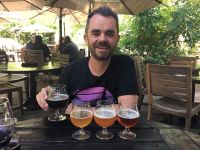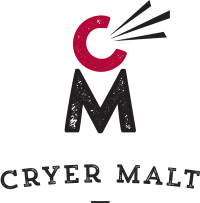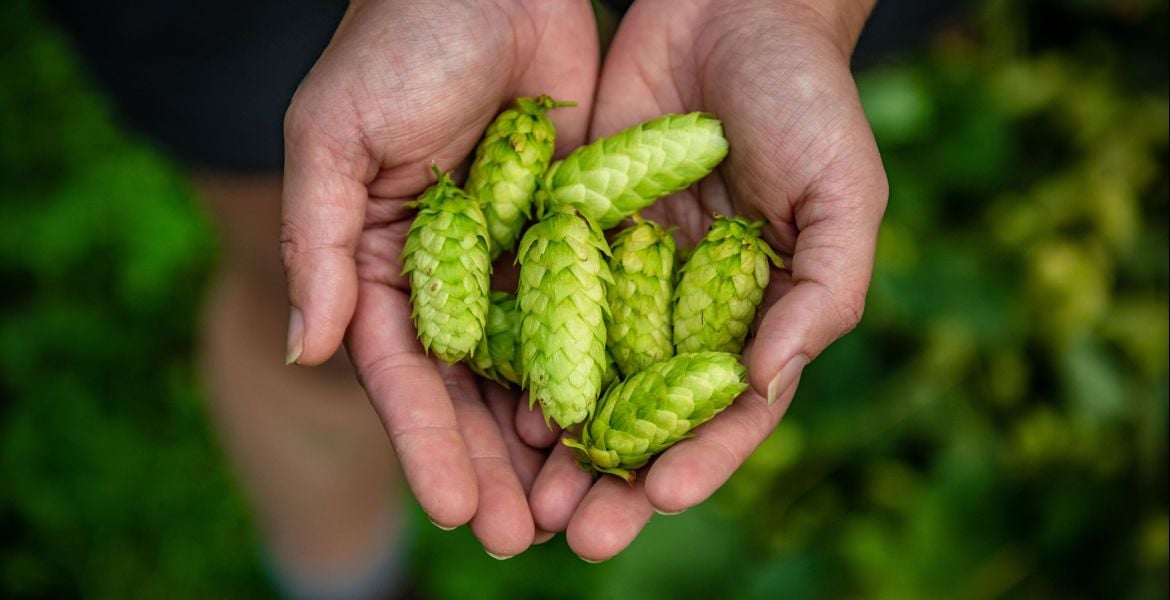Can’t tell your Hop Kief from your Hopzoil? Are words like Phantasm or Cryo on your beer can causing confusion? If so, don’t worry – you’re not alone.
Hops used to be simple. Not too long ago, this humble plant and its precious yellow lupulin predominantly came in three forms: the hoppy holy trinity of whole hop cones, dried cones and pellets. This situation did start to change in the 60s and 70s in the form of commodity bittering extracts for industrial brewers, but, while specific hop varietals increased towards the end of the 20 century, there was little change when it came to new hop products.
Now, however, thanks to new technology, innovative hopping techniques, and a thirst for punchier, juicier beers, there’s a mind-boggling range of supercharged hop products on the market. There’s hop liquids, hop oils, hop drops, hop terpenes, thiol precursor powders, concentrated cryogenically-split pellets, super pellets infused with dried fruit, and plenty more besides.
Typically, they share common goals: aiming to maximise flavour and consistency while minimising waste and logistics costs. Many also sport symbols like ® or ™ in their title (which we'll leave off in most cases for legibility), or boast fanciful names that could easily belong to WWE wrestlers. So, let’s get ready to rumble Subzero, Flex and Citrulicious! (OK, maybe not the last one...)
It’s enough to make drinkers dizzy ... DDH WCIPA with Incognito® HBC 472 and Lupomax® Idaho 7, anyone?
So what does it all mean, what do these things actually do, and how are they shaping beer’s present and future?
To help us navigate this brave new world of hops, we enlisted two experts in the field: One Drop head brewer Nick Calder-Scholes and Working Title co-founder and brewer Mark Howes. They gave us a rundown on their experiences with such products – if you'd like a quick rundown of hop basics before diving in, check out our Beer Basics guide.
Hip Hops: The Brewers' Take

“It’s incredibly exciting,” is how Mark describes the current boom in new toys for brewers. “We’ve always loved exploration and pushing boundaries at Working Title and now we have a much broader gambit of ingredients to play with.”
A veteran brewer with a doctorate in microbiology, he’s just as thrilled with the new science and academic research that’s accompanying these products.
“There’s so many hop compounds and interactions occurring in the brewing process and we still don't understand all of them exhaustively,” Mark says. “The better the science gets, the more interesting the products get.”
Famous for producing innovative and often insane beers (rainbow sherbet sour, anyone?), Nick has been happily bombarding his brews with experimental hop additives for years, and is typically among the first to give any new product a whirl. He’s even released the Terminator-themed T-3022 Synthetic IPA, which said “Hasta la vista” to hop pellets and used seven new derivatives instead (HopBurst®, HopGain®, Salvo™, HopZoil®, Spectrum™, Incognito® and HopHaze® to be exact).
Yet, while Nick loves experimenting, he’s adamant these performance-enhancing additives have a way to go before they’re close to replacing more traditional hopping methods.
“A new hop species in the ground used to take ten to twenty years to develop – now it’s maybe eight to fifteen to go commercial,” he says. “I’d say these products need three to five years of real-world testing before suppliers even know what they can guarantee brewers.”
So, let’s get into the nitty gritty of the actual products themselves which, thankfully, can be gathered together into a few categories. (Which, no doubt, will need adding to over time.)
Concentrated Hop Pellets

For decades, brewers have turned to compressed pellets called T-90s or T-45s made from pulverised hop powder. More potent, portable and consistent than whole leaf hops, the “T” refers to “Type” while the number is how much plant matter remains in the pellet (so 10 percent has been removed in T90s, and 55 percent in T45s during processing).
These newer concentrated pellets like Cryo Hops or Amplifire use cryogenic processing to freeze and separate lupulin from the hops, resulting in cleaner, more intense flavours. Unsurprisingly, they’re more expensive to buy but with more flavour compounds, you don’t need as much. Critically, less plant debris in the mix means more beer yield and ultimately, more profit.
“The pros of concentrated hops are you use far less,” Nick says. “The cons are I would never fully cryo-hop a beer because it's missing some vegetable matter that plays an important role, especially in haze-forward beers where there’s biotransformation.
“If I did, it’d taste a bit one-dimensional with less complexity.”
BRANDS
Cryo Hops | Lupomax | Amplifire | Lupulin Pellets | Iso-Hop Pellets | CGX™ Cryogenic Lupulin Pellets
Hop Liquids & Extracts

Hop liquids aren’t exactly new – as we mentioned up top, big commercial breweries have been using Tetra hop solution to bitter beers since the 1970s – but the recent explosion of new oils, drops, syrups and pastes from suppliers has been truly head-spinning.
Most products use distillation (steam, CO2 or ethanol) to extract hops’ rich compounds into a concentrated liquid form, giving brewers endless new tools to specifically tailor and tweak bitterness, aroma and flavour at every stage of production. Additionally, some claim to improve mouthfeel and beer stability, and reduce risks of oxidation and vegetal off-flavours, as well as preventing hop burn and hop creep.
Products vary wildly in application and chemical makeup. Some are used hot side of the brewing process to add bitterness, while others work best cold side to turbocharge aroma and flavour just before packaging. Some products are distilled on site from freshly-picked hop cones, while others are extracted from pellets.
In the case of Australia, until recently some were pelletised here then distilled overseas before being sent back in their new form. Now, thanks to the launch of Ellerslie's supercritical CO2 extraction facility in the Victorian High Country last summer, making these new age products in Australia from locally grown hop varieties is possible.
“Hop liquids are more expensive but the huge benefit is bigger yields because there’s no plant matter at all,” Mark says. “With pellets, you end up losing a lot of beer volume.
“When we use liquid hops in our little 1,000-litre system, we’re getting 50 to 100 litres more out, which is another keg or two. That’s a big saving which more than covers the higher cost of the products.”

With higher yield and cheaper shipping – a 250ml bottle can replace a five kilogram dry hop – liquids might seem like the holy grail for brewers, but Nick points out they come with caveats.
“I think they give an incredibly different expression of the hop, which is complementary,” he says, “but you can’t ever use them as a standalone product.”
He likens it to brewers using liquid or powdered malt extract instead of whole malted grains: it’s essentially the same ingredient, but gives a notably different flavour.
“I approach these new products with the same mentality,” he adds. “Yes, you're getting 80 percent of the hop essence but there’s still something – a raw natural element from the plant matter – that’s missing.
“I think we're still learning exactly what these products keep and remove during the process, compared to pellets and whole cones.”
Mark agrees: “These liquids are great for enhancing flavour and adding top notes, but once they're contributing more than 30 percent of your equivalent pellet load, you do start to get a flavour that tastes synthetic; the chemical nature of the hops becomes more obvious to the palate.
“It’s like using fruit in beer. You just have to find that balance where they're contributing more rather than detracting.”
BRANDS
Flex (bitterness) | Incognito (flavour and aroma) | Salvo | AromaExtract paste | Spectrum | Hop Oils | HopInspiration | HopZoil | SubZero Hop Kief | Amplifire Oils | Ellerslie Hopflow | HyperBoost | DynaBoost | Abstrax Quantum Brite | CO2 Iso Kettle Extract (IKE)
Thiol Powder

OK, ready to get real beer-nerdy? Developed by Garage Project co-founder Jos Ruffell, Phantasm is a concentrated thiol powder that quickly became one of the most talked about products in brewing.
It’s derived from Marlborough sauvignon blanc grapes, which contain precursors of super aromatic compounds called thiols, which are also in hops and malt to a smaller degree. When combined with specific yeasts during fermentation, these thiols are “unlocked” and can produce huge, fruity, tropical flavours of their own. Think of it like Bruce Wayne (precursors) needing his Batsuit (yeast) to unleash Batman (thiols).
Nick from One Drop has been surfing the Phantasm wave for a while now, using it in multiple beers and even test-driving a new liquid prototype in a hazy DIPA called – you guessed it – Liquid Phantasm.
“Phantasm is like a yeast steroid – I love it,” he says. “The pros are it gives you a whole new hop expression that can also amplify other hops. The cons are it needs an extremely active yeast to activate it.
“The most effective yeasts for thiols are actually GMO [genetically modified] which are illegal here in Australia. Instead, we use a yeast crossbred from two yeast strains: a Norwegian kveik and a non-brewing yeast strain with high levels of IRC7 – a thiol converter.”
BRANDS
Combination Hop Products

With so many additives now available, it was only a matter of time before suppliers started smashing them together to create even more high-powered hybrids.
In 2023, Yakima Chief Hops released a double-dosed pellet that blended Cryo hops and Phantasm together in their YCH 303 trial, while Freestyle Hops have done similar with their Mega Motueka and Super Sauvin pellets, also infused with Phantasm, and Clayton Hops talked about their Thiol Theory infused pellets late in 2023.
Freestyle Hops also released “botanical blend” pellets and hop kief liquids, which combine NZ hops with different fruit extracts. Their Kohia Nelson range infuses Nelson Sauvin and Rakau hops with dried passionfruit, while their Maui Nelson version adds pineapple.
Mark explored the latter in Working Title’s four-part Fracture beer series with dazzling results.
“We took a batch of our hazy IPA and split it into four bright tanks and added four different Freestyle hop kiefs right at the very end,” he says of the early 2024 release. “That way, we’re seeing the true nature of those hop extracts.
“They are expensive and delicate but I’m a big fan.”
No doubt we’ll see more crazy combos as suppliers strive to land the knock-out blow in the never-ending battle for hop supremacy.
BRANDS
Natural Additions | YCH 303 | Super Sauvin | Mega Motueka | Kohia Nelson
Terpenes

Giving the phrase “Getting on the terps” a whole new meaning, terpenes are highly aromatic compound elements that give plants (such as hops, herbs and cannabis) their distinct scent and flavour. Besides beer, terpenes are often used in essential oils, perfumes and even food.
Hops contain plenty of terpenes, but popular ones in brewing include myrcene (herbal and spicy), limonene (citrus, fruity), linalool (floral) and humulene (woody, earthy). Lab-isolated terpenes let brewers tweak their beers at a more micro level than other hop products and amp up the qualities they want: think of it like a music producer adjusting an EQ slider, but with flavour.
Nick has taken terpenes for test drives in beers such as Liquid Strata IPA and Herd That! brown ale and sees their value in increasing amplified flavour and beer output.
“We’re all chasing more yield now because our hopping rates are going up,” he said in our terpenes feature. “The market is asking for hoppier beers and therefore our wastage is going up and our yield is going down.”
He adds: “I love terpenes but it’s a lot of misses and not a lot of hits. We see a three-pronged approach, which is still using a hop-based product, whether it’s T90 or Cryo pellets, then one of these hop plant-derived products, whether it’s HopZoil or Hop Kief; the third prong is using [terpenes] to amplify and not replace.”
BRANDS
Abstrax Omni Profiles, SkyFarm & BrewGas | Euphorics (not yet available in Australia)
So, there you go – next time you scan a can of DDH hazy IPA and find a run of terms with ® or ™ attached, they might make a little more sense. It's worth noting, however, that the brands and products listed in the categories above isn't exhaustive; there are other forms of hops in use across the wider brewing world – see here just for the full range offered by HPA, for example – but this captures those of most relevance to the craft beer industry, especially in Australia where some products are not yet available, and some remain illegal.
As more become available to Australian brewers, we'll add them to this feature. For now, however, it's time to extract yourselves from reading about hops and try some of the above in action.
Photo at top of article courtesy of YCH Hops.



















